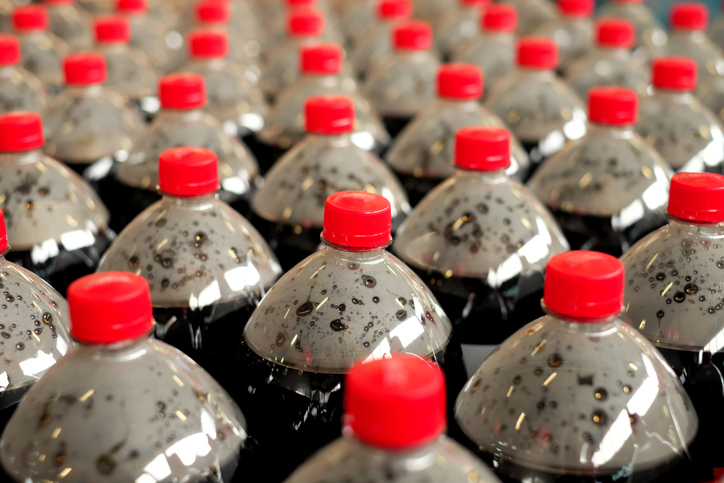
All the talk these days seems to be about digital transformation and offering a personalized digital banking experience. Or, on the in-branch side, the need to offer the kind of personalized, financial guidance that people simply won’t find with non-traditional institutions, such as digital only banks. It seems to be all about services; that the only way to win and keep customers is by offering them products and services that are better than the competitor’s. Which, as a former ad guy, leads me to ask this question: What happened to branding?
To answer it, I invite you to take a time-machine spin back to 1985-86, which was the height of what was then called “the cola wars.” The warring factions? Coca-Cola USA and PepsiCo. Coke and Pepsi were at the time, and I believe the same holds true today, within a point or two of each other in terms of market share. The soft drink market, at the time, was a $26 billion market, and the two giants battled it out by spending hundreds of millions of dollars, largely on television. If you’re too young to remember, it was kind of fun to watch. Brand image campaigns were supplemented by “taste test” commercials. Oddly, but not surprisingly, both sides claimed to win these taste tests, which only added to the fun… and confusion.
Back then, Coke’s brand position was “Always Coca-Cola” while Pepsi went with “The Choice of a New Generation.” Coke watched as Pepsi, making use of superstar athletes, actors, and musicians as endorsers, began to grab that much-coveted target audience; the pre-teens who were “transitioning” from juice drinks to soft drinks. You see, it was (and still is) common knowledge among those in the soft drink biz that cola drinkers are some of the most brand loyal on the planet. So, winning that pre-teen was (and still is) critical to a soft drink’s success.
As Pepsi earned the loyalty of these just-starting-to-drink-cola youngsters, the folks at Coca-Cola, of course, began to panic. Their solution? To develop and market a product that could better compete with Pepsi. Makes sense, right? What happened afterward, however, didn’t. The decision was made to take the current Coke product off the market and replace it with this new product; one that, with a re-formulation, would taste more like Pepsi… less carbonation with a bit more sweetness. This “new” coke would be called “New Coke,” a cola that would hopefully appeal to the younger market by offering them “the great taste of Coca-Cola with the sweetness of Pepsi.” Unfortunately, Coca-Cola was somehow ignoring another critical market: Their current, brand loyal customers.
On July 20, 1986, the New York Times published an article entitled, “Keeping New Coke Alive.” The article described just how difficult a time Coca-Cola was having with the new product. At the time, McDonald's, along with Denny's, "several other fountain customers," and many of Coca-Cola's bottlers wanted nothing to do with New Coke. Coca-Cola Classic, the new name for the old cola that New Coke was supposed to replace had, in less than two years since New Coke's launch, outsold New Coke by a margin of more than 4 to 1. Ironically, the brand that Coca-Cola had sought to shelve saw record sales and profits with the New Coke launch with revenues climbing almost 20%.
So, why do I think that this anecdote is relevant to today’s discussion about services, digital transformation, AI-driven user experiences, etc.? Because what those of us in the banking industry need to remember is that while the products and services we offer are important, so is building and supporting the brand.
Fast forward to the present day. Marketing pundits now frame it this way: “No one cares what you do. They’re only interested in why you do it.” A superior digital experience is important, and so is in-branch financial advice, but consumers consider more than just features when choosing a brand. In the ABA Journal article, “What are you doing about customer loyalty?” author Phil Seward had this to say: “In the digital age, financial services providers have seen the industry drastically change due to an increase in competition from non-financial institutions. Technology organizations are embedded in consumers’ daily lives, and pride themselves on putting the customer experience first and foremost. This expectation of an enhanced customer experience has made it harder for traditional banks to break through the noise and remain top of mind, putting them at risk of losing customers. Building brand loyalty can be a powerful way to influence customer behavior and enhance the bottom line.”
Look at Coca-Cola. The company had created such powerful brand loyalty for Coca-Cola Classic that when they tried to replace it with something new and improved, Classic came back stronger than ever. Classic's brand was so strong, that New Coke never had a chance and taste wasn't even a consideration; it was all about a brand with fans, a brand that, nearly a century old, people knew and loved.
So, what can banks learn from the cola wars? Know, and love, your audience. Build your brand around these individuals. Supplement your product/service messaging with consistent messaging that reinforces “why you are,” instead of what you do. Constantly remind your customers how important they are to you. Build a strong brand by building strong relationships. Do this and, like Coca-Cola Classic, your brand will be well prepared to defend itself from any attack.
About Bank Marketing Center
Here at BankMarketingCenter.com, our goal is to help you with that vital, topical, and compelling communication with customers; messaging that will help you build trust, relationships, and revenue. In short, build your brand. To view our campaigns, both print and digital, visit bankmarketingcenter.com. Or, you can contact me directly by phone at 678-528-6688 or email at nreynolds@bankmarketingcenter.com. As always, I would love to hear your thoughts on this subject.